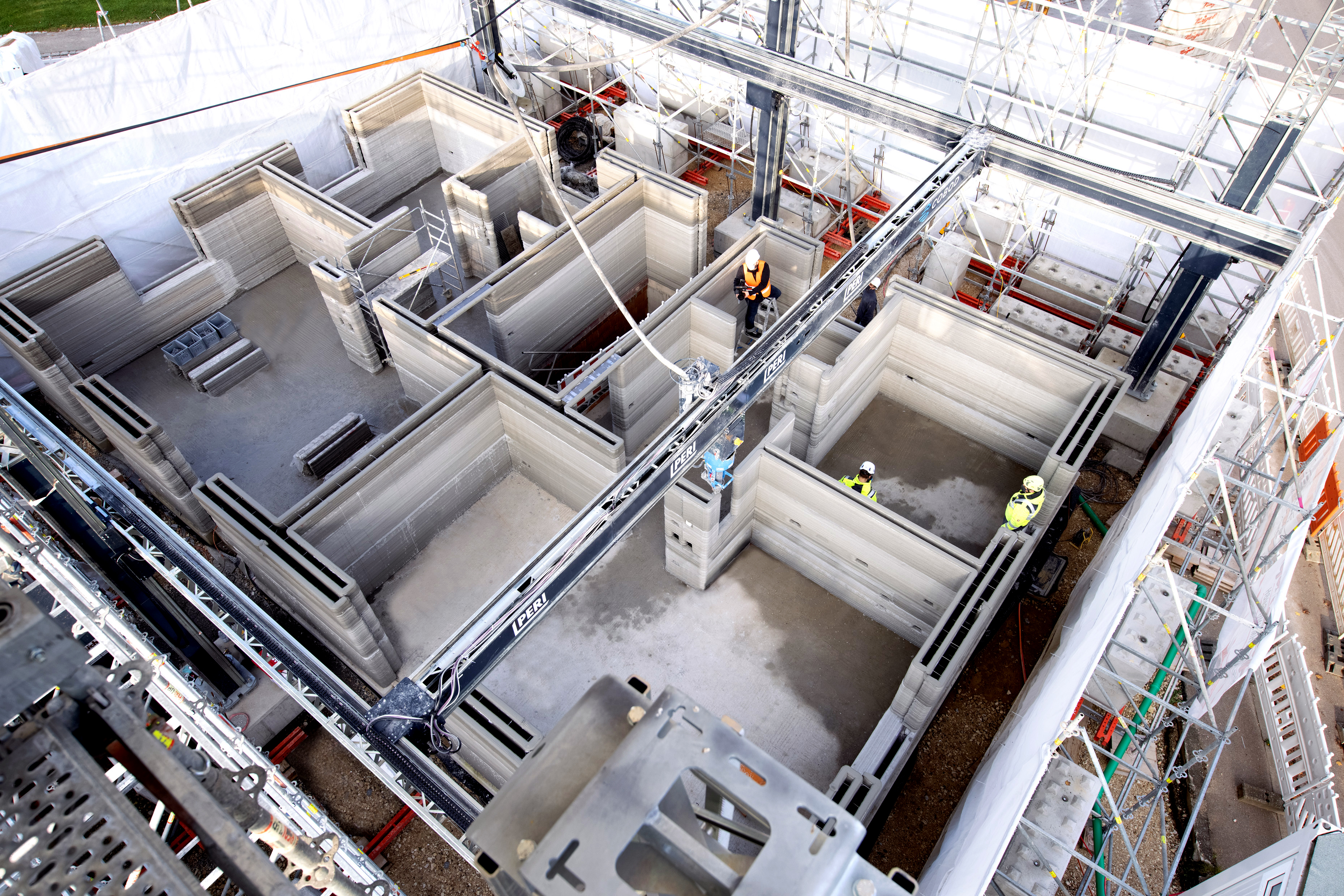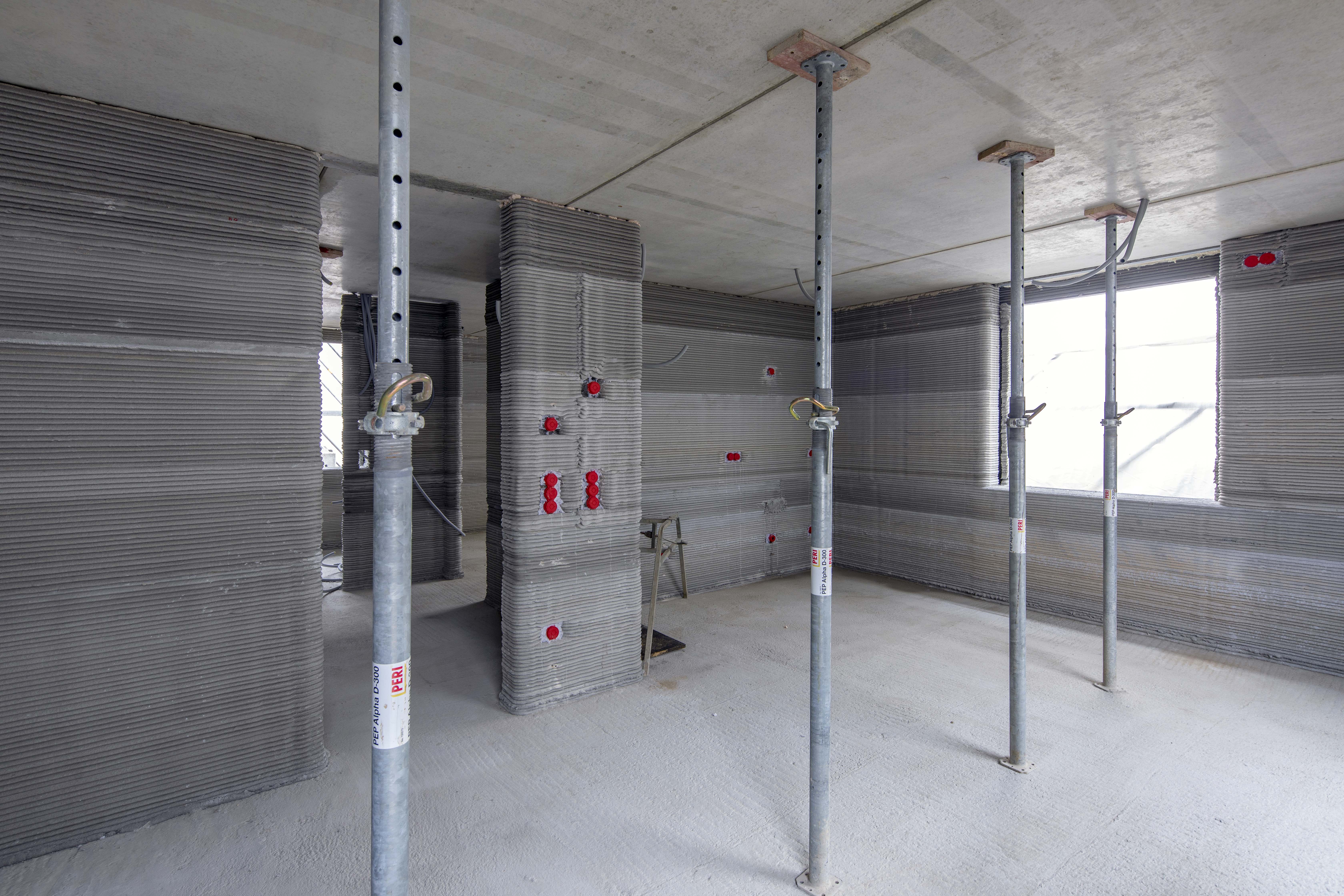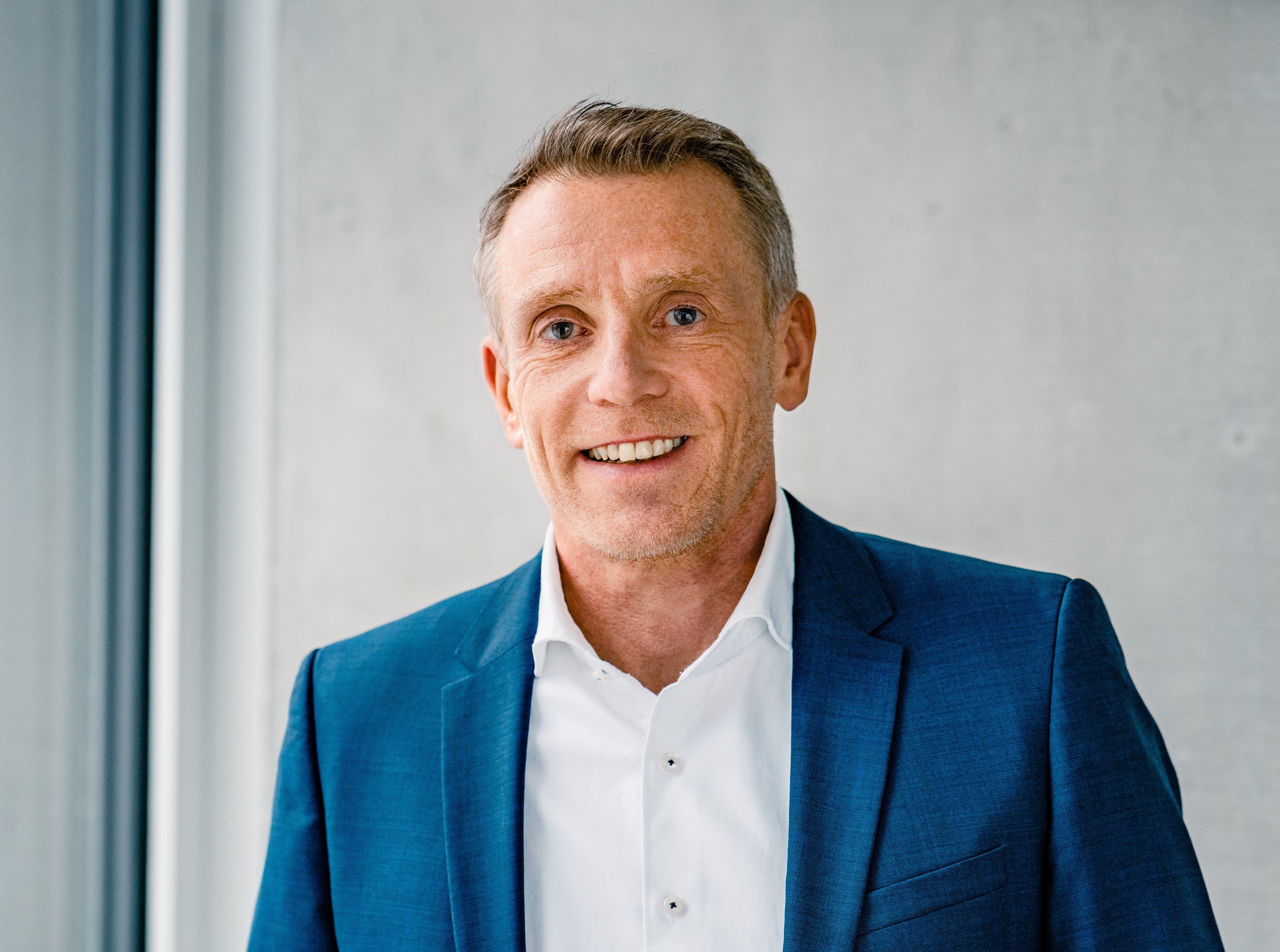Layer by layer towards Europe’s largest printed residential building
HeidelbergCement delivers 3D printing material for 330 m2 housing block
Layer by layer: Europe’s largest residential building is currently being printed in Bavaria at a rate of 18 metres per minute. For this purpose, HeidelbergCement has delivered about 170 tons of printing material specially developed for concrete 3D printing. The innovative material “i.tech 3D” was already used about eight weeks ago to print the first residential building in Germany in the Westphalian town Beckum.
“With this second project in Germany, we are taking the next step and show that our material is also suitable for printing larger residential units and blocks of flats,” says Dr. Jennifer Scheydt, head of the Department Engineering & Innovation at HeidelbergCement Germany. “The material is easy to pump and extrude. Moreover, it quickly develops sufficient load-bearing capacity so that the lower layers do not give out under the load of the upper layers. The bond between the layers is also ensured. At the same time, the unerring strength development of “i.tech 3D” ensures a printed image with high form accuracy,” continues Scheydt.
The block of flats with approximately 330 m2 of living space will be the largest printed residential building in Europe upon completion. The project in Wallenhausen, Bavaria is scheduled to take six weeks of printing in total. The house is being printed by PERI with a BOD2 3D concrete printer. “For this project, the PERI team is once again relying on HeidelbergCement as a proven and innovative partner,” says Dr. Fabian Meyer-Brötz, head of 3D Construction Printing at PERI. “Our experiences with “i.tech 3D” on both construction sites are very good and we are very satisfied with the collaboration and of course the material.”
The residential building is built with a complete cellar and will offer four flats on two storeys with about 330 m2 of living space upon completion. This is not a research or demonstration project, as the flats will be rented out as normal after completion.
“The future has begun,” says Dr. Jennifer Scheydt. “The innovative material for 3D printing enables applications for all shapes and sizes. We are convinced that this new way of building will prevail in the coming years.”
More information at: https://www.heidelbergcement.de/de/i.tech3D
About HeidelbergCement
HeidelbergCement is one of the world’s largest integrated manufacturers of building materials and solutions, with leading market positions in aggregates, cement, and ready-mixed concrete. Around 54,000 employees at more than 3,000 locations in over 50 countries deliver long-term financial performance through operational excellence and openness for change. At the center of actions lies the responsibility for the environment. As forerunner on the path to carbon-neutrality, HeidelbergCement crafts material solutions for the future.
Photo 1The apartment building with about 330 sqm living space will be the largest printed residential house in Europe after completion. A total of six weeks printing time has been estimated for the project.
Copyright: PERI GmbH
Photo 2
The unerring strength development of "i.tech 3D" from HeidelbergCement ensures a print image with high form fidelity.
Copyright: HeidelbergCement AG / Michael Voit
Photo 3
This is not a research or demonstration project; the apartments will be rented out regularly after completion.
Copyright: PERI GmbH
Downloads

Photo 1: 3D concrete printing process. The apartment building with about 330 sqm living space will be the largest printed residential house in Europe after completion. A total of six weeks printing time has been estimated for the project.
PERI GmbH

Photo 2: Print image with high form fidelity. The unerring strength development of "i.tech 3D" from HeidelbergCement ensures a print image with high form fidelity.
HeidelbergCement AG / Michael Voit

Photo 3: Apartment house Wallenhausen. This is not a research or demonstration project; the apartments will be rented out regularly after completion.
PERI GmbH

Photo 1: 3D concrete printing process. The apartment building with about 330 sqm living space will be the largest printed residential house in Europe after completion. A total of six weeks printing time has been estimated for the project.
PERI GmbH

Photo 2: Print image with high form fidelity. The unerring strength development of "i.tech 3D" from HeidelbergCement ensures a print image with high form fidelity.
HeidelbergCement AG / Michael Voit

Photo 3: Apartment house Wallenhausen. This is not a research or demonstration project; the apartments will be rented out regularly after completion.
PERI GmbH

